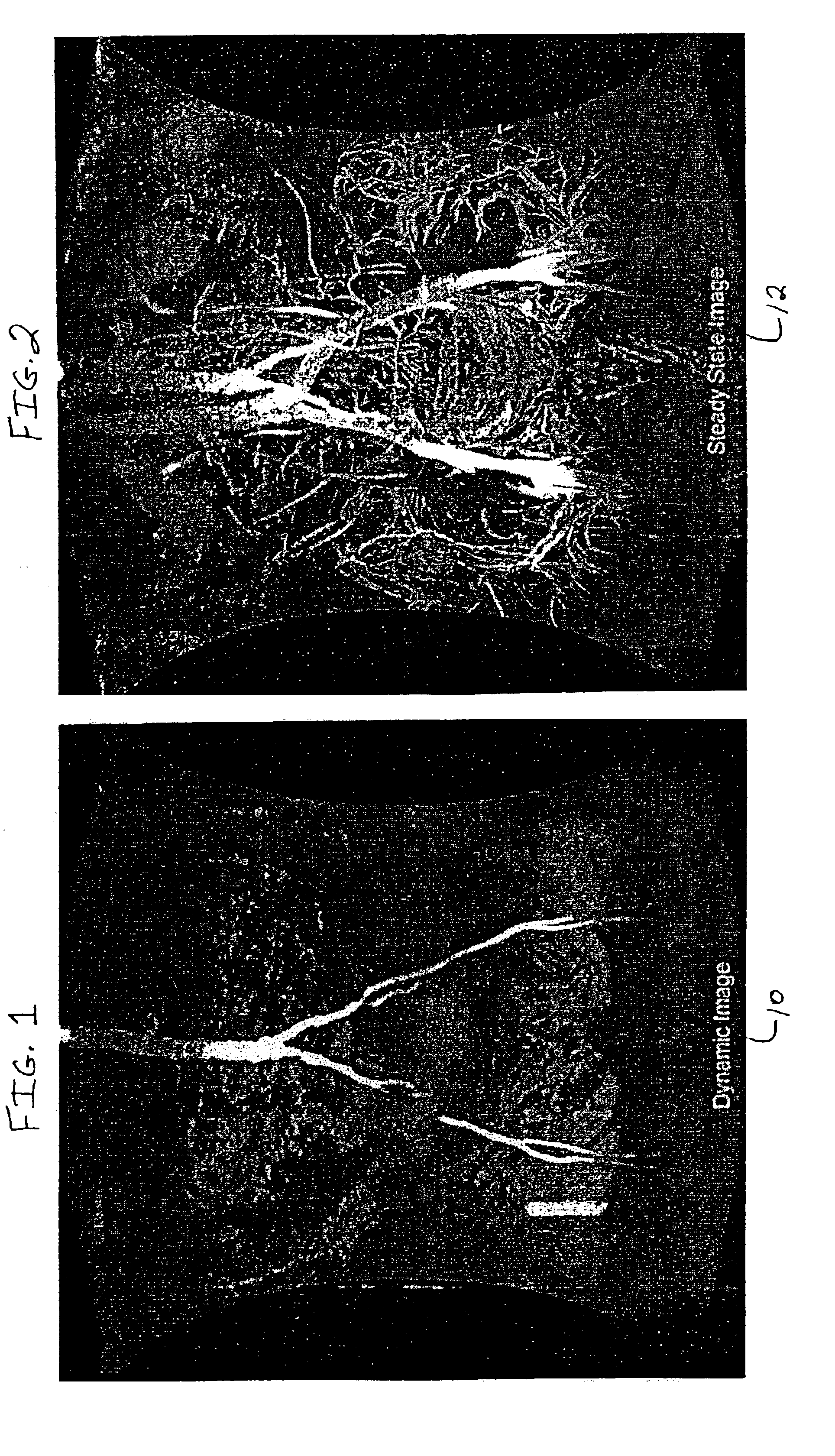Magnetic resonance angiography data
- Summary
- Abstract
- Description
- Claims
- Application Information
AI Technical Summary
Benefits of technology
Problems solved by technology
Method used
Image
Examples
example
[0053]An adult human subject was administered MS-325 by intravenous injection and a series of dynamic MRA scans were collected of the thorax during the first pass of contrast agent with the following imaging parameters:[0054]Instrument: 1.5 T GE Medical Systems[0055]Pulse sequence: T1-weighted SPGR, TE=1.8, TR=8.7, flip angle=40[0056]Resolution: 1.8×1.8×3.6 mm[0057]Dimensions: 512×192×52[0058]Field of View: 440×330 mm
An MIP of this data set is presented in FIG. 1. During the steady state the patient was imaged again to generate a second data set with the following modifications to the above parameters:[0059]Pulse sequence: T1-weighted SPGR, TE=2.1, TR=18.7, flip angle=30[0060]Resolution: 0.9×0.9×1.8 mm[0061]Dimensions: 512×512×128
An MIP of this data set is presented in FIG. 2. The data set from the dynamic scan was interpolated up to the resolution of the steady state scan and the two were combined according to equation I (vide supra), with α=0.75 and β=0.25, by the computer program...
PUM
 Login to View More
Login to View More Abstract
Description
Claims
Application Information
 Login to View More
Login to View More - R&D
- Intellectual Property
- Life Sciences
- Materials
- Tech Scout
- Unparalleled Data Quality
- Higher Quality Content
- 60% Fewer Hallucinations
Browse by: Latest US Patents, China's latest patents, Technical Efficacy Thesaurus, Application Domain, Technology Topic, Popular Technical Reports.
© 2025 PatSnap. All rights reserved.Legal|Privacy policy|Modern Slavery Act Transparency Statement|Sitemap|About US| Contact US: help@patsnap.com



